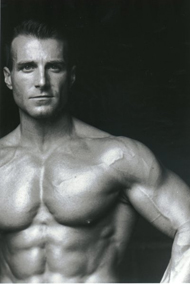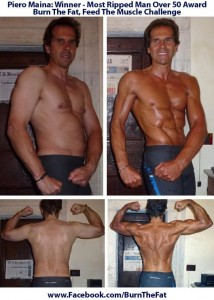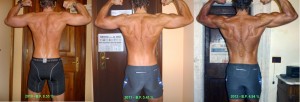Title: The New Visualization Breakthrough: Mental Training Tactics For Health And Fitness Success
By line: By Tom Venuto, CSCS, NSCA-CPT
URL: BurnTheFat.com
Word count: 1500 words
The New Visualization Breakthrough: Mental Training Tactics For Health And Fitness Success
By Tom Venuto, NSCA-CPT, CSCS www.BurnTheFat.com
Understanding the mind’s role in motivation and behavior is one of the most critical elements in fitness success. If you struggle with changing habits and behaviors or if you can’t get motivated, then even the best training and nutrition program is not much help.
A fascinating fact about your subconscious mind is that it’s completely deductive in nature. In other words, it’s fully capable of working backwards from the end to the means. You don’t need to know how to reach a goal at the time you set the goal. If you “program” only the desired outcome successfully into your “mental computer,” then your subconscious will take over and help you find the information and means and carry out the actions necessary to reach it.
Many people are familiar with affirmations and goal-setting as ways to give instructions to your subconscious mind. But perhaps the ultimate mental training” technique is visualization. In one respect, affirmation and visualization are the same, because when you speak or think an affirmation first, that triggers a mental image, being as the human brain “thinks” in pictures.
You can use visualization to plant goals into your subconscious mind. You simply close your eyes, use your imagination and mentally create pictures and run movies of your desired results. For example, in your mind’s eye, you can see the “body of your dreams”. If repeated consistently with emotion, mental images are accepted by your subconscious as commands and this helps with changing habits, behavior and performance.
Although there are some new and creative ways to use visualization, (which you are about to learn), this is not a new technique. Visualization has been used formally in the fields of sports psychology and personal development for decades and philosophers have discussed it for centuries:
“If you want to reach your goal, you must ‘see the reaching’ in your own mind before you actually arrive at your goal.”
– Zig Ziglar
“The use of mental imagery is one of the strongest and most effective strategies for making something happen for you.”
– Dr. Wayne Dyer
“Creative visualization is the technique of using your imagination to create what you want in your life.”
– Shakti Gawain
“Perhaps the most effective method of bringing the subconscious into practical action is through the process of making mental pictures – using the imagination.”
– Claude Bristol
“There is a law in psychology that if you form a picture in your mind of what you would like to be, and you keep and hold that picture there long enough, you will soon become exactly as you have been thinking.”
– William James, 1842-1910, Psychologist and Author
Despite these glowing endorsements and a long track record, some people can’t get past feeling that this is just a “hokey” self-help technique. Rest assured, however, that visualization is an effective and time-tested method for increasing personal success that has been used by some of the highest achievers the world.
The Soviets started to popularize visualization in sports psychology back in the 1970’s, as detailed in Charles Garfield’s landmark book, “Peak Performance.” They dominated in many sports during that period, which validated visualization anecdotally.
In the last 10-15 years, there has been some groundbreaking new brain research which has validated visualization scientifically. Here’s something that was written recently by Dr. Richard Restak, a neuroscientist and author of 12 books about the human brain:
“The process of imagining yourself going through the motions of a complex musical or athletic performance activates brain areas that improve your performance. Brain scans have placed such intuitions on a firm neurological basis. Positron emission tomography (PET) scans reveal that the mental rehearsal of an action activates the prefontal areas of the brain responsible for the formulation of the appropriate motor programs. In practical terms, this means you can benefit from the use of mental imagery.”
So much for visualization being a “cheesy” self-help technique.
Although visualization is widely used today, even people who are familiar with it often don’t realize its many applications. Arguably the most common use of visualization is by athletes, musicians and other performers as a form of “mental rehearsal.” Research shows that “practicing in your mind” is almost as effective as practicing physically, and that doing both is more effective than either one alone.
A common use of visualization in the fitness context is “goal visualization.” In your mind’s eye, you can see yourself having already achieved your physique goal or your ideal goal weight. You can also visualize a specific performance goal such as completing a difficult workout or a heavy lift like a squat or bench press.
One creative way you can use mental imagery is called “process visualization.” Once you’ve set your goals, it’s easy to come up with a list of the daily habits, behaviors and action steps necessary to reach your goal. So write down the action steps and visualize them – the entire process, not just the end result. See yourself food shopping and grabbing fruits, vegetables and lean proteins, ordering healthy foods from restaurant menus, saying no to sodas and drinking water instead, and going to the gym consistently and having killer workouts. Some people visualize their entire “perfect day” as they would want it to unfold. When you do this as vividly, emotionally and in as much detail as you can, you will be neurologically priming your brain to carry out those behaviors.
The least known of all mental imagery techniques is called “physiology visualization.” An example would be picturing the fat burning process in your body or seeing the muscle fibers growing larger and larger. Using this technique, could it be possible that you might be giving subconscious instructions to your body’s cells, organs and tissues?
Well, consider the work of Dr. Carl Simonton, a physician and cancer researcher who taught his patients (as one part of a comprehensive program), how to visualize powerful immune cells devouring the cancer cells. I’m not suggesting that you can cure cancer or materialize a lean and muscular body just by visualizing, (there’s a step in between thought and manifestation – it’s called action – a step that many self help ‘experts’ forget to mention). However, thoughts and mental images are the precursors to action and the fact that a mind-body connection definitely exists makes this an exciting prospect.
Scientists have established the mind-body link in many contexts, and not just by the existence of a placebo effect. There’s also direct evidence as in the way emotional stress can contribute to physical disease. The mind does influence the body! The mere fact that a branch of science has been devoted to this area is proof that it deserves critical investigation and is not just the domain of infomercial self help gurus. The science is called psychoneuroimmunology.
Using “physiology visualization,” you could, even in the middle of a workout, imagine the fat burning process taking place, and visualize fat being released from adipose tissue storage in your abdominal region or elsewhere. You could see the free fatty acids entering your bloodstream, being carried to the working muscles and being burned for energy in the muscle cells. You could also visualize the physiology of muscle growth.
To make your imagery as accurate and detailed as possible, my best suggestion is to refer to an anatomy & physiology textbook that shows pictures of fat cells, blood vessels, myofibrils, motor units, sarcomeres, and cell organelles like the mitochondria, so you know what the structures look like. You could also get more details about the processes by looking up lipolysis, hypertrophy or beta oxidation.
Even if you had no idea what the internal structure and workings of the body were like, you could still use this method. Your body responds to mental imagery even if it isn’t anatomically correct. We know from the field of hypnosis that the subconscious mind responds well to metaphor – maybe even better than literal suggestions. Facts and logic are the domain of the conscious mind, while emotion and metaphor can slip right past the conscious and into the subconscious. Dr. Simonton often wrote about his young patients who created (metaphorical) mental images of immune system cells as “knights in shining armor”, slaying “the dragon” of cancer cells.
One of your greatest mental powers is imagination. You can visualize anything you want and you can embellish and exaggerate your imagery as much as you want. For example, you could imagine the free fatty acids being burned for energy in the “cellular powerhouse” – the mitochondria – and you could imagine the mitochondria as a fiery furnace… “incinerating” the fat! I think it’s a pretty cool idea to “see” your fat cells shrinking and visualize your body as a “fat burning furnace.”
Should you not believe that there’s anything to the physiology visualization technique, that’s ok, because we know that the subconscious is deductive. Just give it a goal, tell it what you want and it will get you there automatically by altering your attention and behavior. Therefore, we can be confident that physiology visualization will be effective even if only as a subconscious directive about your desired goal. If science someday provides us with conclusive evidence that visualization actually does cause cellular – physiological changes in the body, well, that’s just all the better.
About the Author:
Tom Venuto is a natural bodybuilder, certified strength and conditioning specialist
(CSCS) and a certified personal trainer (CPT). Tom is the
author of “Burn the Fat, Feed The Muscle,” which teaches
you how to get lean without drugs or supplements using
methods of the world’s best bodybuilders and fitness
models. Learn how to get rid of stubborn fat and increase
your metabolism by visiting: www.BurnTheFat.com



















